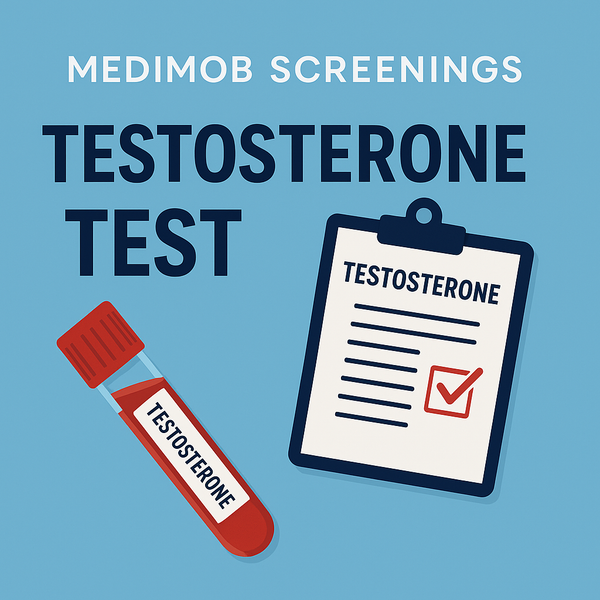High Cholesterol: when is it dangerous?
High cholesterol is one of the most known risk factors for developing cardiovascular diseases. Knowing what it is and how to manage is important in the prevention of cardiovascular diseases.

Most people know that cholesterol is a major cardiovascular risk factor, but it’s actually not harmful by itself. Cholesterol is an essential substance for the body because it plays many vital roles. It only becomes a health risk when blood levels go beyond certain limits. Do you know the healthy cholesterol ranges for your age?
To find out your cholesterol levels, you need a blood test. However, there are also physical signs of high cholesterol that can hint at a problem. Here’s what to look for and when high cholesterol actually becomes dangerous.
What is cholesterol?
Cholesterol is a type of fat, known scientifically as a sterol, found in our blood and throughout the body. About 80-90% of our cholesterol is made by our body, especially in the liver, while only a small portion (10-20%) comes directly from food.
There are two main types of cholesterol:
- LDL or "bad" cholesterol: If there’s too much, it tends to build up on the walls of the arteries, forming thick layers or plaques that can slow down blood flow.
- HDL or "good" cholesterol: This type helps transport extra LDL cholesterol from organs and tissues back to the liver, where it’s eliminated.
Cholesterol itself isn’t harmful—in fact, it’s a vital substance for our body. It supports essential functions, such as forming the structure of cell walls and aiding in the production of important hormones like testosterone and cortisol.
However, only a small amount of cholesterol is needed for these functions. If cholesterol levels go beyond a certain point, it can start to harm the body’s health.
Cholesterol: Target Levels
Cholesterol only becomes a problem when its levels in the blood—known medically as cholesterolemia—go above certain thresholds.
For total cholesterol, the desired level is under 200 mg/dL (milligrams per deciliter of blood). Recent research suggests lowering this target to 190 mg/dL, especially for people with other risk factors like high blood pressure or smoking habits.
- 200-250 mg/dL: Considered mild high cholesterol.
- Above 250 mg/dL: Considered high, with levels over 299 mg/dL categorized as very high.
For LDL (bad) cholesterol, the optimal level is between 100 and 129 mg/dL for healthy individuals, while those with risk factors should aim for below 100 mg/dL. For people with a history of heart issues or who are at high risk, the target drops to 70 mg/dL. Levels between 130 and 159 mg/dL are near the upper limit, while those above 160 mg/dL are considered high.
For HDL (good) cholesterol, experts recommend keeping levels above 50 mg/dL.
When to Consult a Doctor
Your doctor should always interpret cholesterol levels in the context of your overall health. Similar cholesterol numbers don’t mean the same level of risk for everyone. For instance, a person who’s diabetic, overweight, and smokes is at higher risk of heart disease than someone with the same cholesterol levels but without these additional factors.
Why High Cholesterol is Dangerous
High cholesterol is a major risk factor for several diseases, especially for the heart and brain. Over time, if left untreated, it can lead to atherosclerosis—a condition where blood vessel walls become thick and hardened. In atherosclerosis, fatty deposits (mainly from LDL cholesterol) and scar tissue form plaques inside the arteries.
Eventually, these plaques can restrict blood flow partially or even completely. If a plaque ruptures, it can trigger repair and clotting processes that may quickly block the artery or cause pieces of plaque to break off, potentially leading to embolisms—blockages that can vary in severity.
This process can lead to conditions like:
- Angina pectoris: Chest pain due to reduced blood flow to the heart
- Thrombosis: Blood clot formation in a vessel
- Heart attack (myocardial infarction): Blocked blood flow to the heart muscle
- Stroke: Blocked or reduced blood flow to the brain
- Claudication: Pain and muscle weakness in the legs during walking due to poor circulation
Causes of High Cholesterol
- Unhealthy Diet: Eating foods high in saturated fats and trans fats.
- Lack of Physical Activity: A sedentary lifestyle can lower HDL (good cholesterol) and raise LDL (bad cholesterol).
- Smoking: Smoking damages blood vessels, making it easier for cholesterol to build up.
- Other Health Conditions: Conditions like hypothyroidism (low thyroid function), diabetes, nephrotic syndrome (a kidney disorder), and liver diseases can raise cholesterol levels.
- Certain Medications: Some drugs, including immunosuppressants, antiretrovirals, corticosteroids, and aromatase inhibitors, can increase cholesterol.
- Genetic Predisposition: A family history of high cholesterol can increase your risk.
Other Risk Factors for High Cholesterol
- Diabetes: High blood sugar can damage blood vessel walls, making it easier for cholesterol to build up.
- High Blood Pressure (Hypertension): Puts extra strain on blood vessels, which can worsen cholesterol-related blockages.
- Overweight and Obesity: Extra weight is linked to higher LDL (bad cholesterol) and lower HDL (good cholesterol).
- Smoking: Further damages blood vessels and raises risk for cholesterol buildup.
- Physical Inactivity: Lack of exercise lowers HDL and raises LDL.
- High Triglycerides: Excess fat in the blood, often linked to diet, increases cholesterol risk.
- Family History (Genetics): A genetic predisposition can heighten risk.
- Atherosclerosis: Hardening and narrowing of the arteries, worsened by high cholesterol.
- Metabolic Syndrome: A group of conditions (like high blood sugar, high blood pressure, excess fat around the waist) that raise cholesterol and cardiovascular risk.
- Cardiovascular Diseases: Existing heart issues make managing cholesterol even more crucial.
Tips to Lower Cholesterol
- Exercise Daily: Aim for at least 30 minutes of physical activity each day. If the gym isn’t your thing, try home workouts or simply go for a walk. Walking is a great option—do you know how many steps or minutes per day can help reduce cholesterol?
- Cut Back on Saturated Fats: Reduce animal fats and choose healthier fats, like those in vegetable oils, which are rich in mono- and polyunsaturated fats.
- Eat More Fish: Fish is high in omega-3 fatty acids, which can help lower cholesterol.
- Increase Fruits and Vegetables: Aim for five servings a day to boost fiber and antioxidants.
- Limit Salt and Sugar: Reducing salt and added sugar can help with overall heart health.
- Don’t Smoke: Quitting smoking can improve your HDL (good cholesterol) levels.
- Watch Your Weight: Maintaining a healthy weight supports better cholesterol levels.
Resources:
- https://www.nhs.uk/conditions/high-cholesterol/
- https://www.ncbi.nlm.nih.gov/books/NBK279318/
- https://www.ncbi.nlm.nih.gov/books/NBK459188/
- https://www.ncbi.nlm.nih.gov/books/NBK470561/
- https://pubmed.ncbi.nlm.nih.gov/26247090/
- https://pubmed.ncbi.nlm.nih.gov/33762150/
- https://pubmed.ncbi.nlm.nih.gov/30900369/
- https://pubmed.ncbi.nlm.nih.gov/31194434/



